Michael Schöberl
On the influence of clipping in lossless predictive and wavelet coding of noisy images
Jan 11, 2023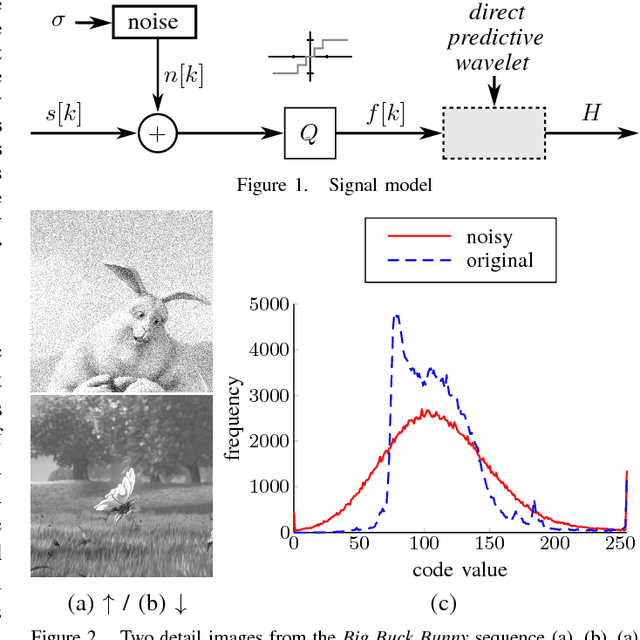
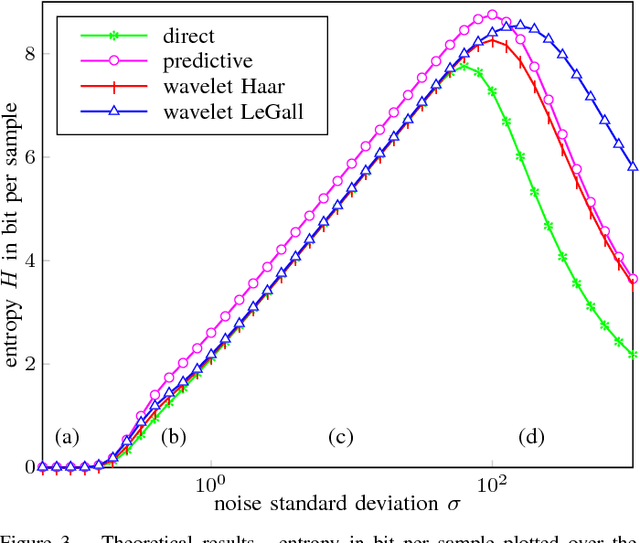

Abstract:Especially in lossless image coding the obtainable compression ratio strongly depends on the amount of noise included in the data as all noise has to be coded, too. Different approaches exist for lossless image coding. We analyze the compression performance of three kinds of approaches, namely direct entropy, predictive and wavelet-based coding. The results from our theoretical model are compared to simulated results from standard algorithms that base on the three approaches. As long as no clipping occurs with increasing noise more bits are needed for lossless compression. We will show that for very noisy signals it is more advantageous to directly use an entropy coder without advanced preprocessing steps.
Spatio-temporal error concealment in video by denoised temporal extrapolation refinement
Jul 08, 2022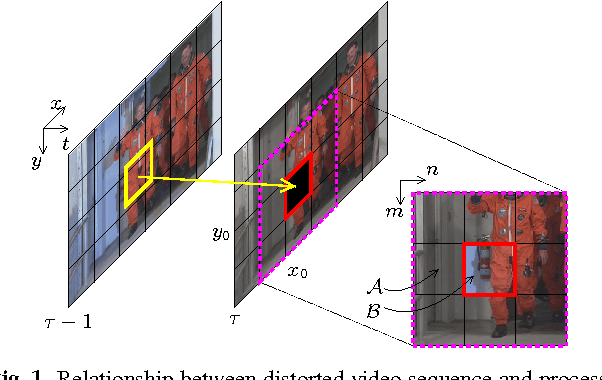
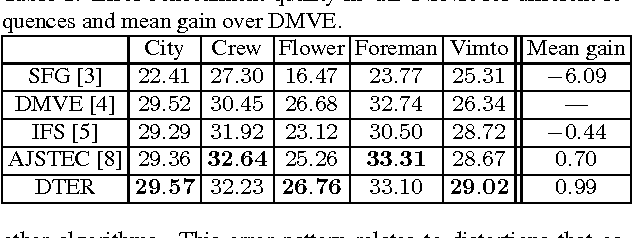
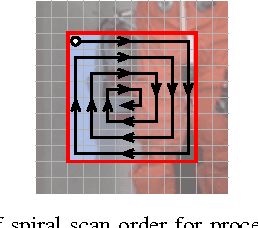

Abstract:In video communication, the concealment of distortions caused by transmission errors is important for allowing for a pleasant visual quality and for reducing error propagation. In this article, Denoised Temporal Extrapolation Refinement is introduced as a novel spatiotemporal error concealment algorithm. The algorithm operates in two steps. First, temporal error concealment is used for obtaining an initial estimate. Afterwards, a spatial denoising algorithm is used for reducing the imperfectness of the temporal extrapolation. For this, Non-Local Means denoising is used which is extended by a spiral scan processing order and is improved by an adaptation step for taking the preliminary temporal extrapolation into account. In doing so, a spatio-temporal error concealment results. By making use of the refinement, a visually noticeable average gain of 1 dB over pure temporal error concealment is possible. With this, the algorithm also is able to clearly outperform other spatio-temporal error concealment algorithms.
Resampling Images to a Regular Grid from a Non-Regular Subset of Pixel Positions Using Frequency Selective Reconstruction
Apr 27, 2022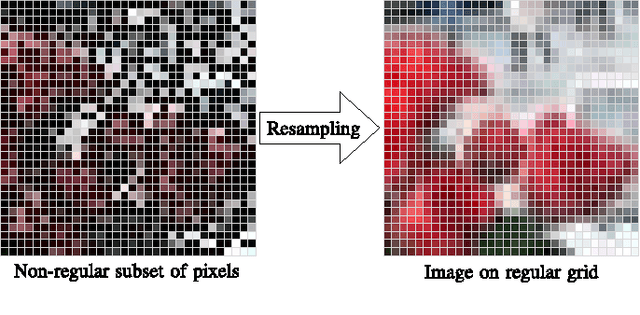
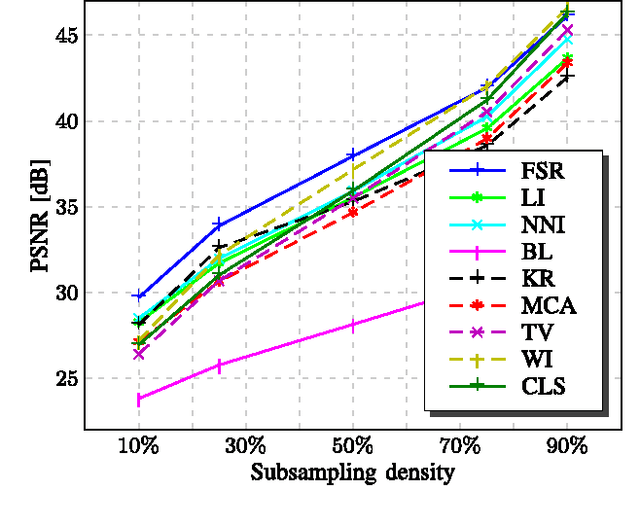
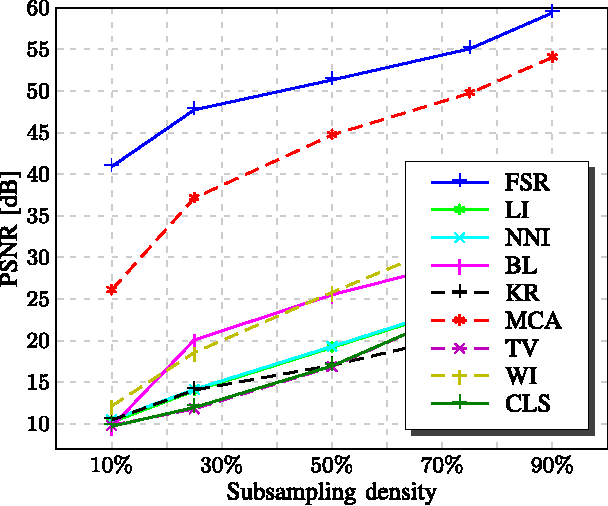
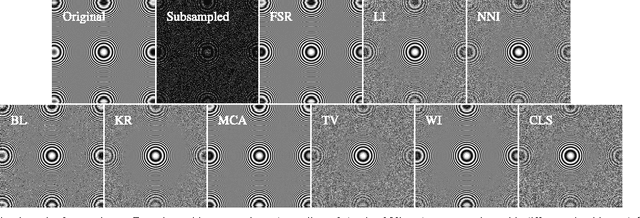
Abstract:Even though image signals are typically defined on a regular two-dimensional grid, there also exist many scenarios where this is not the case and the amplitude of the image signal only is available for a non-regular subset of pixel positions. In such a case, a resampling of the image to a regular grid has to be carried out. This is necessary since almost all algorithms and technologies for processing, transmitting or displaying image signals rely on the samples being available on a regular grid. Thus, it is of great importance to reconstruct the image on this regular grid so that the reconstruction comes closest to the case that the signal has been originally acquired on the regular grid. In this paper, Frequency Selective Reconstruction is introduced for solving this challenging task. This algorithm reconstructs image signals by exploiting the property that small areas of images can be represented sparsely in the Fourier domain. By further taking into account the basic properties of the Optical Transfer Function of imaging systems, a sparse model of the signal is iteratively generated. In doing so, the proposed algorithm is able to achieve a very high reconstruction quality, in terms of PSNR and SSIM as well as in terms of visual quality. Simulation results show that the proposed algorithm is able to outperform state-of-the-art reconstruction algorithms and gains of more than 1 dB PSNR are possible.
Dynamic Non-Regular Sampling Sensor Using Frequency Selective Reconstruction
Apr 07, 2022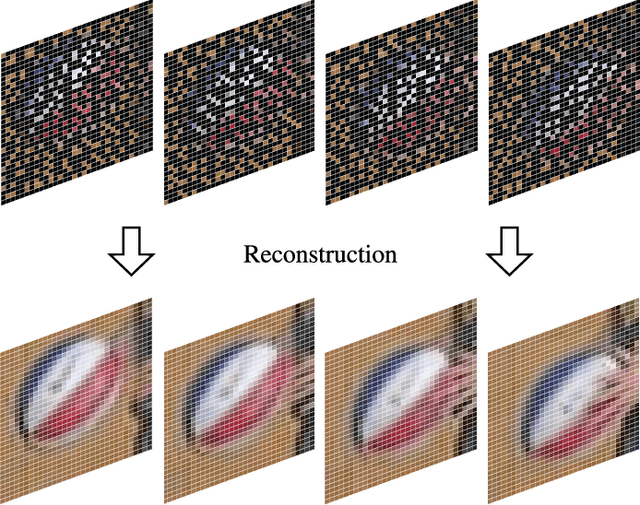
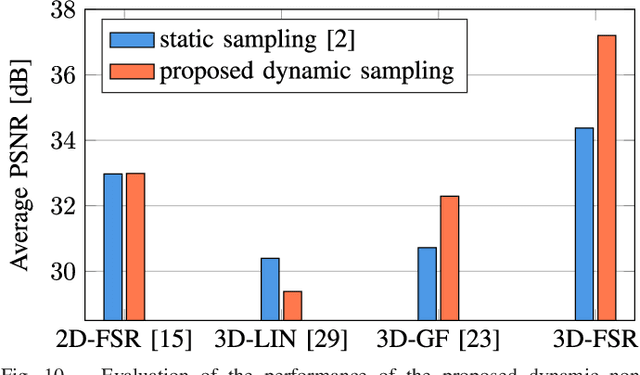
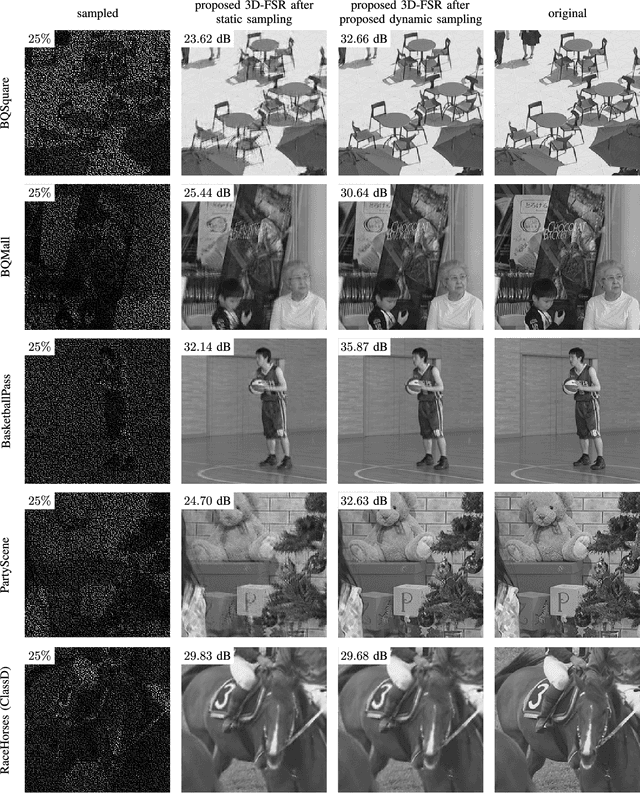
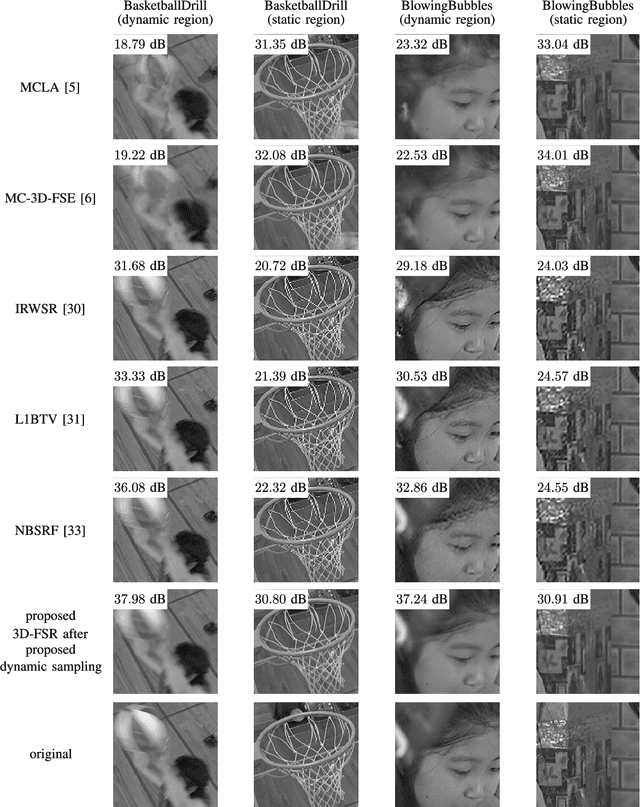
Abstract:Both a high spatial and a high temporal resolution of images and videos are desirable in many applications such as entertainment systems, monitoring manufacturing processes, or video surveillance. Due to the limited throughput of pixels per second, however, there is always a trade-off between acquiring sequences with a high spatial resolution at a low temporal resolution or vice versa. In this paper, a modified sensor concept is proposed which is able to acquire both a high spatial and a high temporal resolution. This is achieved by dynamically reading out only a subset of pixels in a non-regular order to obtain a high temporal resolution. A full high spatial resolution is then obtained by performing a subsequent three-dimensional reconstruction of the partially acquired frames. The main benefit of the proposed dynamic readout is that for each frame, different sampling points are available which is advantageous since this information can significantly enhance the reconstruction quality of the proposed reconstruction algorithm. Using the proposed dynamic readout strategy, gains in PSNR of up to 8.55 dB are achieved compared to a static readout strategy. Compared to other state-of-the-art techniques like frame rate up-conversion or super-resolution which are also able to reconstruct sequences with both a high spatial and a high temporal resolution, average gains in PSNR of up to 6.58 dB are possible.
 Add to Chrome
Add to Chrome Add to Firefox
Add to Firefox Add to Edge
Add to Edge